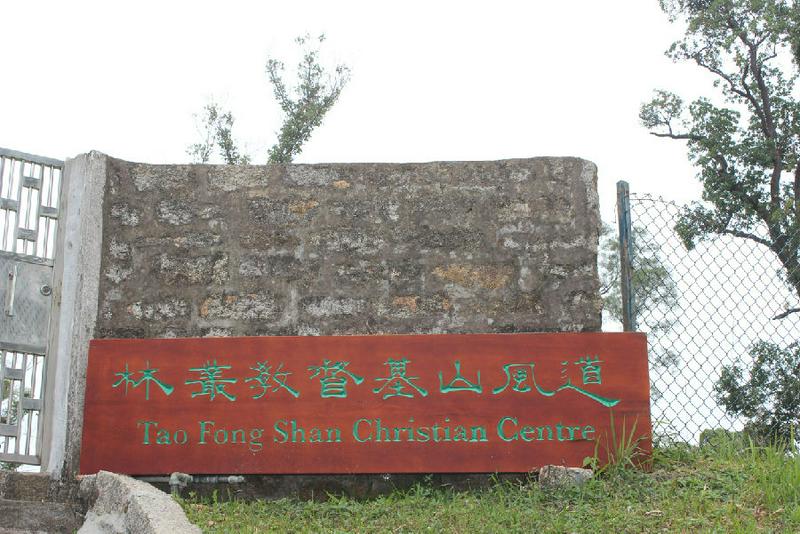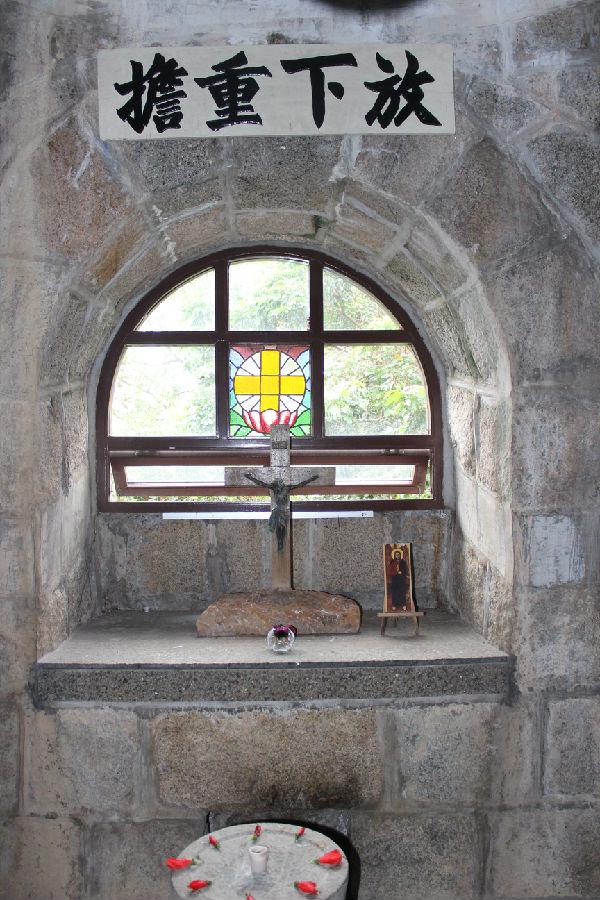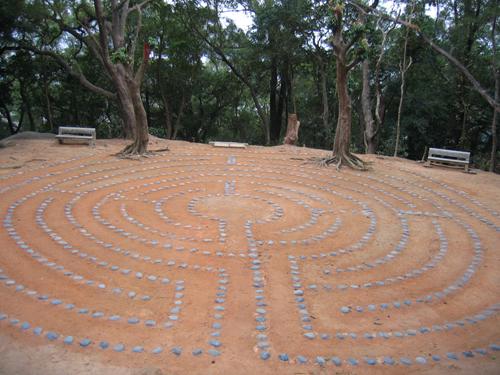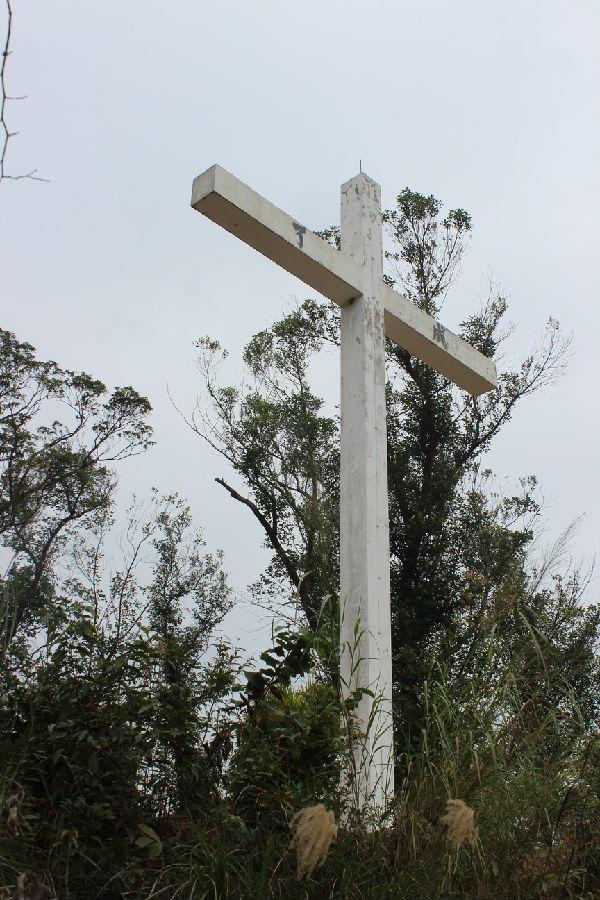Located on a hill in the village of Sha Tin in Hong Kong, far from the hustle and bustle of the city, the Tao Fong Shan Christian Centre is a complex of buildings in unique, classical Chinese style.
The name Tao Fong Shan is also quite unique. "Tao" means "the word of God", "wind" means "the power of the Holy Spirit", and "Centre" refers to "the place of worship".
Therefore, "Tao Fong Shan" is a place of worship, overcoming the barriers of religious culture, and is committed to establishing cultural and religious exchanges and cooperation in order to cultivate and develop Christian indigenous spirituality, art and etiquette.
One of the characteristics of Tao Fong Shan is the integration of Christian elements into Chinese classical architecture and combining Chinese and Western culture. This Christian complex consists of a church, a prayer room, a library, an art club dedicated to the production and sale of Christian artefacts, and retreat facilities.
Recently, I had the honor visiting Tao Fong Shan. What one first sees is the Christian Hong Kong Faith Society's Tao Fong Shan Lutheran Church. The Buddhist pagoda-style temple is octagonal in shape and in the style of the Temple of Heaven in Beijing. Inside the temple, what is front and center is a hanging plaque that reads "the Word became the flesh" in Chinese and on each side another plaque one that reads "the Word was with God" and the other, "the wind blows wherever it pleases", both in Chinese also. According to the tradition of the Lutheran church, the communion table is placed in the middle, modelled after the sacrificial altar in Buddhism. On two sides of the temple are the scripts of hymns in ancient Chinese calligraphy style. Currently, the temple can accommodate up to 70 people and it hosts morning prayers from Monday to Thursday, afternoon and evening prayers from Monday to Friday, and two services on Sunday in Cantonese and English respectively.
The quiet room in the basement of the temple is called the "Lotus Crypt", which is intended for individuals or groups to meditate. At the entrance of the crypt, one can look up and see a banner with the words "lay down your burden", providing the person with a sense of relaxation and tranquility. The lotus cross symbol is engraved on the window below the banner. According to the official Tao Fong Shan website, the lotus grows out of muddy soil but remains clean resembling a gentleman who possesses the noble character and representing Chinese culture. The lotus is also a Buddhist holy flower symbolizing the holy and unstained mind. It is combined with the Christian cross to express the mission of Christianity to take root in Chinese culture. To other religions it presents an open and mutually rich vision. Embedded on both sides of the stone wall are two wood panels engraved with scriptures that read: "Blessed are the pure at heart for they will see God (Matthew 5:8)" and "The blood of Jesus Christ can wash away all of our sins (1 John 1:7)." There are benches on both sides where visitors can quietly pray and meditate. What is interesting was that as I was about to walk out of the quiet room after a brief prayer, I saw a plaque above me that read, "carry your cross", a reminder to me that the true Christian faith is not simply about enjoying God's beauty and the fellowship of God, but to walk in this world as Jesus Christ did and to bear the cross with Him.
Leaving the Lotus Crypt, I walked into the woods outside the main complex. From the hillside there is a stone stone path totaling one hundred steps. Its size allows one person only to walk on eventually leading to the "life door". On both sides of this narrow door is written "wide path" where many walk but find no real pleasure; the narrow door has few who enter to find eternal life." After entering through the "life door", I looked up to read another banner that reads, "love". The inscription was written by Dr. Sun Yat-sen. On both sides of the overhead banner is written " Go and proclaim the gospel to the world." The courtyard has a Chinese-style pavilion called the "Grateful Pavilion". Next to it is a cross. The 40-foot-tall cross is the largest in Hong Kong. Engraved on the horizontal beam in Chinese are the characters for the word "finished". Looking down from the hill where the cross is situated, one can see Sha Tin town center. The cross is also visible from the town center. Next to the cross is a large stone engraved with the words in Chinese, "live in the Lord", reminding me to walk with the Lord in life more often.
As I walked back along the path, I entered a "maze" (also known as a labyrinth) by the side of the lotus pond. People can follow the twists and turns of the path while praying and meditating. Walking a labyrinth is a kind of meditation method that was used by churches during the Middle Ages. It seems that the maze leads one to a dead end. In fact however, at the starting point believers continue on and circle into the center of the labyrinth. At the center one can pray and then walk again circling out of the maze. The entrance is also the exit representing that this spiritual walk is complete.
We then went back to the courtyard and visited the Art Club. Art Club sells Christian artifacts in Chinese style, ceramics, spiritual books and books about Chinese Christian art.
Not far from the Art Club is the Christian Retreat Center, Yunshui Hall, which can accommodate up to 40 people. Individual believers or church groups can rent the facility for retreats and conferences.
According to the Tao Fong Shan Historical Review (1903-2010), official website as well as information board at the Center, the founder of Tao Fong Shan was the Norwegian missionary Dr. Karl Ludvig Reichelt. In 1903, Reichelt was assigned to China by the Norwegian Mission Society. He began his church work in the small town of Ningxiang, Hunan Province, and in the following year visited the Buddhist temple of Lu Shan, which led him to develop an a revolutionary concept that changed the methods of Western missions. Over the years, he devoted himself to studying Chinese religion, especially Buddhism, in order to bring the gospel to those who had aspired to devote themselves to religious life.
In 1922, he founded Jingfeng Shan Christian Centre in Nanjing in reference to the Buddhist temple system to entertain Buddhist and Taoist students. Later, in 1930, as a result of the War, Reverend Reichelt immigrated to Hong Kong. In May, in a public auction, the Mission Society bought for the total price of 3,705 Mexican gold coins, a hill that looked out over the village of Sha Tin. This was the present day site of where the Tao Fong Shan Christian Centre was founded. Danish architect Johannes Prip-Moller was invited to design the vast Chinese-styled complex. Reverend Reichelt was buried on March 13, 1952, at the Church Cemetery in Tao Fong Shan.
In 1967, the Norwegoam theologian Dr. Sverre Holt became the President of Tao Fong Shan. In 1981, the Tao Fong Shan Universal Movement Research Center was established. Two years later, Pastor He Anshi was appointed president of Tao Fong Shan. A year later, the Church of Tao Fong Shan became a member of the Hong Kong Lutheran Church. In the following year, the Tao Fong Shan board od directors donated part of the hill property to become the location of the Lutheran Theological Seminary's new campus.
In 2000, the overall restructuring of Tao Fong Shan was completed and reconstituted into three independent institutions: Tao Fong Shan Christian Centre, Christian Chinese Language & Culture Research Institute" and "Tao Fong Shan Ministries".
- Translated by Charlie Li
















